Introduction
When do pregnant rabbits start nesting? Let’s find out.
Picture this: a fluffy, adorable rabbit, with a twinkle in her eye and a bulging belly, embarking on a magical quest to prepare for the arrival of her precious little kits. As a passionate rabbit lover, I couldn’t resist delving into the secrets behind their nesting habits and the mysteries of when and why pregnant rabbits start building alternate nests.
You see, there’s more to these enchanting creatures than meets the eye. Behind those twitching noses and floppy ears lies a world of instinctual behaviors and hormonal changes that drive them to create the perfect nest for their growing family.
But here’s the kicker: what if I told you that the timing of nest building isn’t always a cut-and-dry affair? Oh no, my friend.
It’s a race against time, nature, and their own every-growing bellies!
And that’s not all. The environment they find themselves in plays a crucial role in their nesting behaviors.
So, are you ready to uncover the thrilling secrets behind pregnant rabbits and their incredible nesting habits? Get ready to explore the timing, triggers, and unexpected twists of this enchanting world.
Hold on tight, the adventure is about to begin!
Key Takeaways
- Nesting behavior is an essential instinct for pregnant rabbits.
- Rabbits typically start exhibiting nesting behavior around 25-30 days into pregnancy.
- Signs that nesting is about to begin include increased restlessness, gathering materials, rearranging bedding, and spending time in secluded areas.
- To support nesting behavior, provide soft nesting materials, a quiet environment, and observe from a distance.
- Different rabbit breeds may start nesting at slightly different times.
- Factors that influence nesting behavior include hormone levels, temperature, predators, and disturbances.
- Pregnant rabbits may build alternate nests based on environmental conditions.
- Signs of alternate nest building include gathering materials and digging behavior.
- Nest building can occur in the final week of pregnancy, but timing may vary.
- Encourage nesting behavior by providing suitable materials, a safe environment, and burrow options.
- Observe from a distance and minimize stressors during the nesting process.
A Guide to Nesting Behavior in Pregnant Rabbits: Timing and Triggers
Have you ever wondered how pregnant rabbits prepare for the arrival of their adorable little kits? Well, get ready to dive deep into the intriguing world of nesting behavior in these furry creatures.
So, let’s hop right into it!
Understanding the Nesting Behavior
Nesting behavior is an essential instinct for pregnant rabbits. When they become pregnant, their bodies undergo various hormonal changes that prepare them for motherhood.
Timing is Everything
Rabbits typically start exhibiting nesting behavior around 25-30 days into their pregnancy. However, it’s crucial to remember that individual rabbits may show slight variations in timing depending on factors such as breed and environmental conditions.
Signs that Nesting is Imminent
Keep a close eye on your pregnant rabbit for the following signs that nesting is about to begin:
- Increased restlessness and activity
- Gathering materials like straw, hay, and fur
- Rearranging bedding in their enclosure
- Spending more time in secluded areas of their habitat
Preparing the Perfect Nesting Area
To ensure your pregnant rabbit has a comfortable and secure space for her kits, provide her with the following materials:
- Soft and dry nesting materials such as straw, hay, or shredded paper.
- Fresh, clean bedding to line the nest.
- Fur or soft fabric for added warmth and comfort.
Triggers for Nesting Behavior
Now, let’s explore some triggers that can influence nesting behavior in pregnant rabbits:
- Change in hormone levels: As the pregnancy progresses, a surge in reproductive hormones stimulates the nesting instinct.
- Environmental cues: A quiet and undisturbed environment encourages rabbits to build their nests in peace.
- Temperature and lighting: Warmer temperatures and dim lighting mimic the natural burrows where wild rabbits give birth, making them more likely to exhibit nesting behavior.
The Fascinating Nesting Process
Once the nesting behavior begins, you will witness a flurry of activities by your pregnant rabbit. It’s like watching a carefully choreographed dance routine, and it’s truly captivating!
Step 1: Gathering Materials
Your rabbit will enthusiastically collect various nesting materials like straw, hay, and fur. Seeing her meticulously arrange these items is nothing short of adorable.
Step 2: Digging and Shaping the Nest
Using her powerful hind legs, your rabbit will start digging a shallow depression in the bedding or enclosure floor. This will be the foundation of her nest.
Step 3: Lining the Nest
Next, your rabbit will line the nest with softer materials like fur or soft fabric. This layer provides insulation and comfort for the kits once they are born.
Step 4: Nesting Completion
Once satisfied with the nest’s construction and comfort level, your pregnant rabbit will consider it ready for the impending birth of her kits.
Encouraging and Supporting Nesting Behavior
As a responsible rabbit owner, you can take a few steps to encourage and support your pregnant rabbit’s nesting behavior:
- Provide a quiet and secure space away from excessive noise and disturbances.
- Offer plenty of nesting materials ahead of time.
- Observe from a distance, allowing your rabbit to build her nest without feeling watched or disrupted.
Experiencing nesting behavior in pregnant rabbits is truly a magical and heartwarming process. Understanding the timing and triggers behind this behavior will help you ensure your furry friend’s comfort and well-being during this special time.
Nesting Habits in Different Rabbit Breeds: When Do They Begin?
Rabbits, those cute and fluffy creatures that capture our hearts, have unique nesting habits. As an animal enthusiast and rabbit lover, I have dedicated my time to look into the fascinating world of rabbits and uncover their secretive nesting behaviors.
Why Nesting Habits Matter
Understanding a rabbit’s nesting habits is crucial for ensuring their well-being and assisting them in providing a safe and comfortable environment for their offspring. Rabbits are known for their incredible maternal instincts, which include creating cozy nests for their babies.
A Glimpse into the Rabbit World
Before diving deeper into the nesting habits of different rabbit breeds, let’s take a moment to grasp the basics. Rabbits, both domestic and wild, belong to the family Leporidae.
From the adorable Lionhead to the majestic Flemish Giant, rabbits come in various shapes, sizes, and colors.
Nesting Habits in Popular Rabbit Breeds
Dwarf Rabbit Breeds
Dwarf rabbit breeds, like the Netherland Dwarf and Holland Lop, are known for their petite size and irresistibly cute appearances. When it comes to nesting, these tiny rabbits tend to start preparing their nests a few days before giving birth.
Medium-Sized Rabbit Breeds
Medium-sized rabbit breeds, like the Californian and the Mini Rex, have distinct nesting patterns. Typically, these rabbits begin their nesting rituals approximately one week prior to giving birth.
Large Rabbit Breeds
Large rabbit breeds, such as the Flemish Giant and Checkered Giant rabbits, are known for their impressive size and gentle demeanor. These magnificent rabbits often start preparing their nests around one to two weeks before giving birth.
Unique Nesting Behaviors
While the above nesting patterns are common among various rabbit breeds, it is important to note that individual rabbits may exhibit unique nesting behaviors. Some rabbits tend to burrow within their bedding material, creating intricate tunnel systems within their nests.
Signs that Nesting Habits Have Begun
If you are eagerly waiting for new additions to your rabbit family, keep an eye out for these signs indicating that nesting habits have begun:
- Increased digging activity: Rabbits may instinctively dig and scratch at their bedding, indicating their desire to create a nest.
- Gathering materials: Watch as your rabbit gathers hay, straw, fur, or any soft material available to construct their nest.
- Frequent rearranging: Rabbits may show an increased urge to rearrange their nesting materials, ensuring everything is just right for their little ones.
- Nesting presence: You may catch glimpses of your rabbit spending extended periods of time inside their nest, indicating the onset of their nesting instincts.
Creating a Nesting-Friendly Environment
To support your rabbits’ natural nesting behaviors, it is essential to provide them with a suitable environment. Consider the following tips:
- Provide nesting materials: Offer a variety of soft materials such as hay, straw, and even shredded paper for your rabbit to choose from when creating their nest.
- Privacy is key: Make sure to provide your rabbits with a quiet and secluded area where they can comfortably build their nest and give birth.
- Temperature control: Ensure a warm and consistent temperature within the rabbit’s living space, as newborn rabbits are highly sensitive to temperature changes.
- Observe from afar: It’s important to give your rabbit space and minimize disturbances, allowing them to focus on their nesting duties without feeling stress or discomfort.
From the tiny Dwarf rabbits to the majestic Flemish Giants, each breed has its own unique nesting habits. By understanding when different rabbit breeds begin their nesting rituals, we can provide the necessary support for our beloved furry friends during this pivotal time.
So, pay attention to the signs, prepare the perfect environment, and embrace the wonders of nesting habits in different rabbit breeds!
Creating the Perfect Nest: When and How Pregnant Rabbits Start Nesting
Hi there! Have you ever wondered how pregnant rabbits prepare for the arrival of their adorable little bundles of joy?
we’ll dive into the fascinating world of rabbit nesting and explore when and how these fluffy mamas create the perfect nest for their upcoming brood.
Understanding the Rabbit Nesting Instinct
When rabbits are expecting, they undergo a marvelous transformation. Their maternal instincts kick into high gear, and they start exhibiting behaviors that help them prepare for their babies’ arrival.
When Does Nesting Behavior Begin?
Rabbits typically start nesting a few days before giving birth. This period can vary depending on the breed and individual rabbit, but it commonly occurs around 24 to 48 hours prior to delivery.
Signs Your Rabbit is Preparing to Nest
- Increased restlessness: Your normally calm and collected bunny may become more fidgety and restless.
- Nesting material collecting: Mama rabbits can get quite resourceful when it comes to gathering materials for their nests. They might snatch bits of hay, straw, or even their own fur.
- Digging and tunneling: An unmistakable sign of impending nest construction is when your bunny starts fervently digging and creating tunnels in her cage or enclosure.
- Pulling fur: Rabbits have a unique way of ensuring the warmth and comfort of their nest—by pulling out tufts of their own fur! You might spot your rabbit gently plucking her coat to line the nest.
Creating the Perfect Rabbit Nest: A Step-by-Step Guide
Now that we know when rabbits start nesting, let’s explore the process itself. Creating a cozy nest is essential for the well-being and safety of both the mom and her babies.
Step 1: Provide a Suitable Nesting Box
Begin by offering your rabbit a nesting box. Opt for a box that is spacious enough for her to comfortably move around while providing a sense of security.
Step 2: Offer Nesting Materials
Being resourceful builders, rabbits love collecting various materials to line their nests. Help your bunny out by providing an assortment of materials to choose from.
Place these materials close to the nesting box for easy access.
Step 3: Watch the Nest Take Shape
Prepare to be amazed as your rabbit starts ferrying materials to her nesting box, one small mouthful at a time. She’ll meticulously arrange and rearrange the chosen materials until she’s satisfied with the cozy spot she’s crafted.
Step 4: Ensure Privacy and Security
Pregnant rabbits prefer solitude during the nesting process, so it’s essential to provide a quiet environment. Place the nesting box in a secluded area away from excessive noise and distractions.
Step 5: Monitor and Refill Materials as Needed
Keep an eye on the nesting box, ensuring it remains well-stocked with appropriate materials. If you notice the nest becoming sparse or soiled, replenish it by adding fresh straw, hay, or other suitable bedding options.
The Magic of Rabbit Nesting
Witnessing a pregnant rabbit create her nest is a truly captivating experience. The dedication and care she puts into constructing the perfect space for her little ones is awe-inspiring.
As we’ve discovered together, observing a pregnant rabbit’s nesting process is both fascinating and adorable. Remember, when your bunny starts showing signs of nesting behavior, it’s a clear indication that her maternity countdown has begun.
So, let’s celebrate the beauty of rabbit nesting and gear up to welcome a heartwarming litter of fluffy little bunnies!
The Role of Environment: When Do Pregnant Rabbits Start Nesting in Various Conditions
As an animal lover and rabbit enthusiast, I have always been fascinated by the intricate behaviors of these furry creatures. One particular behavior that piqued my curiosity was the nesting habits of pregnant rabbits.
Do they start building their nests at a specific point during pregnancy? And how does the environment influence their nesting behaviors?
Understanding the Nesting Instinct
Rabbits are known for their exceptional maternal instincts, and nesting is an integral part of their reproductive cycle. Nesting refers to the act of creating a safe and comfortable space for giving birth and raising their kits (baby rabbits).
Factors Influencing Nesting Behavior
A variety of factors influence when pregnant rabbits start nesting, and the environment plays a significant role in triggering their nesting instinct. Let’s explore some of these factors:
1. Nesting Material Availability
Pregnant rabbits need suitable materials such as hay, straw, and fur to build their nests. If they don’t have access to these materials, their nesting behavior may be delayed or altered.
2. Temperature and Weather Conditions
Temperature and weather conditions can greatly impact the timing of nesting behavior. Pregnant rabbits prefer to nest in warm, dry, and sheltered areas.
On the other hand, if it’s too hot, they may seek cooler areas to build their nests.
3. Predators and Safety Concerns
Rabbits are prey animals, and their survival instincts drive them to seek safe and concealed areas for nesting. The presence of predators or any perceived threats can significantly affect when pregnant rabbits start nesting.
4. Social Hierarchy and Stress Levels
Rabbits are hierarchical animals, and social dynamics within a group can influence nesting behaviors. Pregnant rabbits may delay or alter their nesting habits if they feel threatened or stressed by other rabbits in their environment.
5. Time Since Mating
The time elapsed since mating can also impact the onset of nesting behavior. Typically, pregnant rabbits begin nesting a few days before giving birth.
Different Nesting Behaviors in Various Environments
Now that we understand the factors influencing nesting behavior in pregnant rabbits, it’s fascinating to explore how different environments can shape their nesting habits. Let’s take a closer look at some common nesting behaviors in various conditions:
1. Indoor Environments
Given the controlled and often predator-free environment of indoor settings, pregnant rabbits may start nesting earlier compared to their counterparts in outdoor environments. They have access to ample nesting materials, consistent temperatures, and generally lower stress levels.
2. Outdoor Environments
In natural outdoor environments, pregnant rabbits may delay nesting as they evaluate the safety and suitability of their surroundings. They may exhibit more cautious behavior, thoroughly inspecting potential nest sites before committing.
This typically occurs around 26-32 days into pregnancy.
3. Sheltered Outdoor Environments
In sheltered outdoor environments, such as rabbit hutches or enclosures with predator-proof fencing, pregnant rabbits may exhibit nesting behaviors similar to indoor rabbits. These sheltered areas provide a balance between safety and natural surroundings.
Observing and Supporting Nesting Behaviors
As responsible rabbit owners, it is essential to understand and support nesting behaviors in pregnant rabbits. Here are some tips to observe and enhance their nesting experiences:
1. Provide Ample Nesting Materials
Make sure your pregnant rabbits have access to a variety of nesting materials, including hay, straw, and fur. Offer these materials in abundance to allow them to create cozy and comfortable nests.
2. Create a Safe and Stimulating Environment
Ensure that the rabbits’ environment is predator-free and offers a sense of security. Provide hiding spots and areas where they can retreat to encourage nesting behaviors.
3. Monitor Temperature and Humidity Levels
Maintaining optimal temperature and humidity levels promotes nesting behaviors. Ensure the environment is neither too hot nor too cold, and keep the space well-ventilated to prevent excessive humidity.
4. Minimize Stressors
Avoid overcrowding and limit interactions with other rabbits during the nesting period. Minimizing stressors can help create a conducive environment for nesting.
The nesting behaviors of pregnant rabbits are influenced by various factors, with the environment playing a significant role. From temperature and safety concerns to social dynamics and nesting material availability, understanding these influences allows us to better support and appreciate the natural instincts of these amazing creatures.
Unexpected Nesting: When Do Pregnant Rabbits Start Building Alternate Nests?
As a passionate rabbit enthusiast, I have personally witnessed the wonder and beauty of these adorable creatures. But something that has always perplexed me is their nesting behavior, particularly when it comes to pregnant rabbits building alternate nests.
Join me on this adventure as I share everything I’ve learned about when and why pregnant rabbits start building alternate nests.
The Nesting Instinct: A Natural Phenomenon
Rabbits, just like many other animals, have a natural nesting instinct. This instinct is more pronounced in pregnant rabbits as they prepare for the arrival of their adorable bundles of joy.
Factors That Influence Nest Building
Hormonal Changes
As rabbits go through pregnancy, their bodies undergo significant hormonal changes. These hormonal fluctuations trigger the nesting instinct, causing pregnant rabbits to seek out suitable locations to build nests.
Environmental Factors
- Temperature: Rabbits prefer to nest in areas with stable temperatures. If the weather becomes excessively hot or cold, they might seek alternate nesting options.
- Predators: Rabbits are instinctively cautious creatures, and the presence of predators can lead them to build alternate nests in secluded, safer locations.
- Disturbances: Unexpected disturbances, such as loud noises or sudden movements, can make pregnant rabbits seek out alternate nesting options to provide a quieter, more secure environment for their young ones.
Signs of Nest Building
Gathering Materials
Pregnant rabbits often collect materials like hay, straw, fur, or any soft materials they can find to construct their nests. Keep an eye out for these signs of material-gathering:
- Hay or straw disappearing from their usual spots
- Patches of fur missing from the rabbit’s own coat
- Instances of the rabbit bringing in miscellaneous materials
Digging Behavior
Another telltale sign that a pregnant rabbit is preparing an alternate nest is their digging behavior. They might start digging small burrows or enlarging existing burrows to create a cozy and secure space for their upcoming brood.
- Frequent burrow inspections
- Scratching or digging movements near the selected nesting area
When Does Nest Building Begin?
Variable Timing
The timing of nest building can vary between individual rabbits. Most pregnant rabbits start building alternate nests during the final week of pregnancy.
Nesting Urges Before Birth
It’s worth mentioning that pregnant rabbits might show nesting urges even before they start building alternate nests. These early nesting behaviors include rearranging bedding, digging, and burrowing activities.
Encouraging Nest Building
To ensure your pregnant rabbit has a safe and comfortable nesting experience, you can take a few steps to encourage her natural instincts:
- Provide suitable nesting materials: Ensure plenty of soft materials like hay, straw, and shredded paper are readily available for the rabbit to construct her nest.
- Create a safe and quiet environment: Minimize disturbances around the rabbit’s living space and provide a secluded area where she can build her nest without feeling threatened.
- Offer burrow options: If your rabbit lives indoors, consider providing a burrow box or a nesting box to simulate a natural burrow-like environment.
- Observe from a distance: During this critical time, it’s best to minimize handling and avoid other stressors that may interfere with the nest building process.
Witnessing a pregnant rabbit build an alternate nest is truly a marvel of nature. The nesting instinct, triggered by hormonal changes and environmental factors, guides these beautiful creatures to create safe havens for their upcoming offspring.
Conclusion
Wow, what a adventure we’ve been on exploring the nesting behaviors of pregnant rabbits! We’ve uncovered the secrets behind when they start nesting, the triggers that set them off, and the different behaviors exhibited by various rabbit breeds.
Throughout this journey, I’ve been captivated by the determination and resourcefulness of pregnant rabbits as they prepare for the arrival of their precious kits. From the initial signs of restlessness and material gathering to the careful construction of cozy nests, these mamas stop at nothing to create a safe and nurturing environment for their little ones.
But what truly amazes me is the way the environment influences their nesting habits. Whether it’s temperature, predators, or unexpected disturbances, these savvy rabbits adapt their nesting behaviors to ensure the ultimate safety and comfort for their babies.
As I reflect on the wonders of rabbit nesting, I can’t help but feel a sense of wonder and appreciation for these incredible animals. Their instinctual behaviors and dedication to their offspring remind us of the incredible bond between a mother and her young.
So, the next time you see a pregnant rabbit scurrying about, gathering materials and digging with fervor, take a moment to appreciate the intricate and instinctual journey she is embarking on. Observe from a distance, offer support through a suitable environment, and marvel at the miracles of life unfolding before your eyes.
And with that, our adventure comes to a close. I hope this exploration into the timing, triggers, and unexpected twists of nesting behaviors in pregnant rabbits has left you as spellbound and awestruck as I am.
Until our next adventure, keep hopping on the path of curiosity and wonder!
Frequently Asked Questions
When do pregnant rabbits start nesting?
1. When do pregnant rabbits start nesting?
Pregnant rabbits typically start nesting about a week before they are due to give birth.
2. How can I tell if my rabbit is pregnant and about to start nesting?
Signs that your rabbit may be pregnant and preparing to nest include pulling out fur, building a nest with hay or straw, and spending more time in her nesting area.
3. Do all pregnant rabbits nest before giving birth?
Yes, it is instinctual for rabbits to nest before giving birth. However, some rabbits may not display extensive nesting behavior, but they will still create a comfortable and secure area for their kits.
4. What materials should I provide for my pregnant rabbit’s nest?
You should provide your pregnant rabbit with soft materials like hay, straw, or shredded paper to build her nest. Avoid using materials like cotton or fabric, as they can cause health issues if ingested.
5. Can I help my pregnant rabbit with her nesting process?
It is best to let your rabbit handle the nesting process on her own as it is a natural behavior. However, you can provide her with suitable nesting materials and make sure her nesting area is warm, quiet, and secure.
6. What should I do if my pregnant rabbit is not nesting?
If your pregnant rabbit is not nesting, it could be due to various reasons such as stress, discomfort, or a late pregnancy. Observe her behavior, provide a suitable nesting area, and consult a veterinarian if you have concerns.
7. How long does the nesting period last for pregnant rabbits?
The nesting period for pregnant rabbits typically lasts a few days. However, each rabbit is different, and the duration of nesting can vary. It is important to monitor your rabbit’s behavior closely as delivery time approaches.
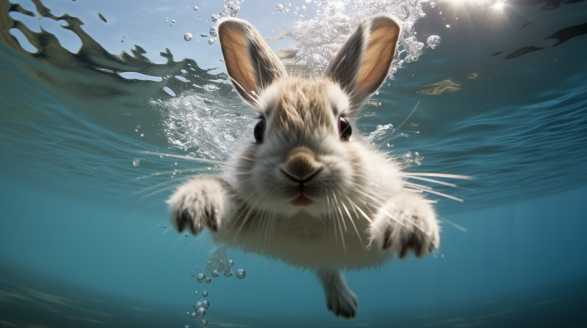
Can Rabbits Swim
Introduction Can rabbits swim? Let’s find out. Together, we’re about to embark on an underwater adventure to uncover the truth behind rabbits and their hidden aquatic abilities. Picture this: fluffy little rabbits gracefully gliding through the water, their ears adorably upright as they navigate the depths below. Sounds pretty incredible, right? It’s like discovering a […]
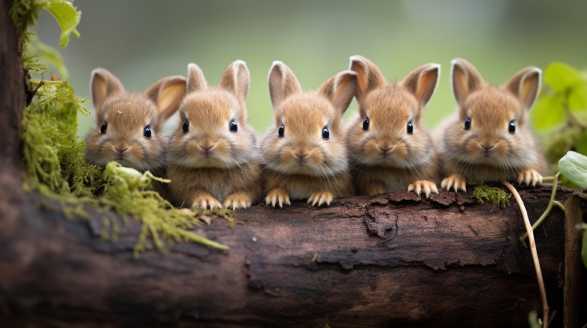
How Many Babies Do Rabbits Have
Introduction Hey there, rabbit enthusiasts! Are you ready to dive into the enchanting world of rabbits and explore their extraordinary reproductive abilities? we will unravel the mysteries behind the rapid breeding capabilities of rabbits and discover the secrets behind their impressive population growth. From the basics of rabbit reproduction to the unique traits of different […]
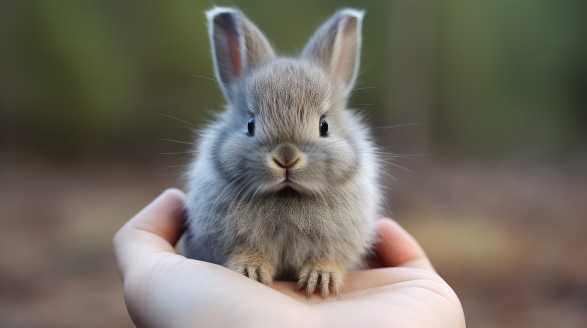
Netherland Dwarf Rabbit Colors
Introduction Are you ready to dive into the fascinating world of Netherland Dwarf rabbits? These adorable little furballs are known for their petite size and oh-so-cute appearance, but there’s so much more to them than meets the eye. So whether you’re a proud Netherland Dwarf rabbit owner or simply a bunny enthusiast, get ready to […]
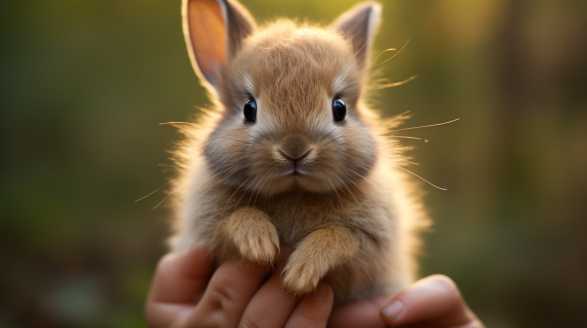
When Do Baby Rabbits Get Fur
Introduction Hey there, fellow rabbit enthusiasts! If you’re like me, there’s nothing more enchanting than watching baby rabbits grow from their hairless, vulnerable state to becoming adorable, furry balls of joy. we’ll take a deep dive into the development of fur in newborn rabbits, exploring their timeline from birth to fluffiness. From the moment they […]
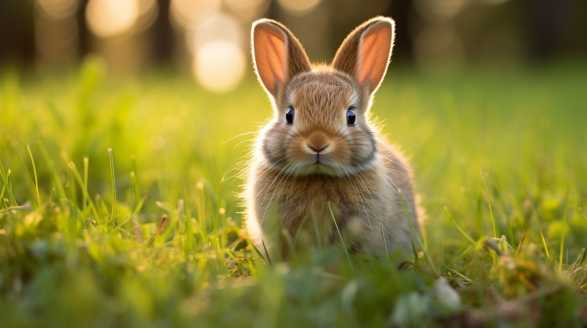
How To Stop Rabbits From Destroying Your Lawn
Introduction Hey there, fellow gardeners and lawn enthusiasts! We all love the sight of a perfectly manicured lawn, don’t we? That’s why I’m here today to share some fantastic solutions to help you reclaim your lawn from these furry invaders. we’ll explore a variety of chemical-free remedies and DIY methods to keep rabbits away from […]
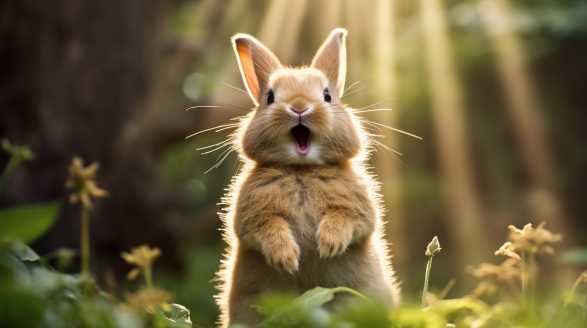
How Many Teeth Do Rabbits Have
How many teeth do rabbits have? Let’s find out. Rabbits, adorable and endearing creatures, have quite the dental arsenal hiding behind their furry exteriors. Contrary to popular belief, these herbivorous mammals possess an impressive set of teeth. With a grand total of 28 teeth, rabbits have incisors, premolars, and molars, all strategically placed to munch […]

